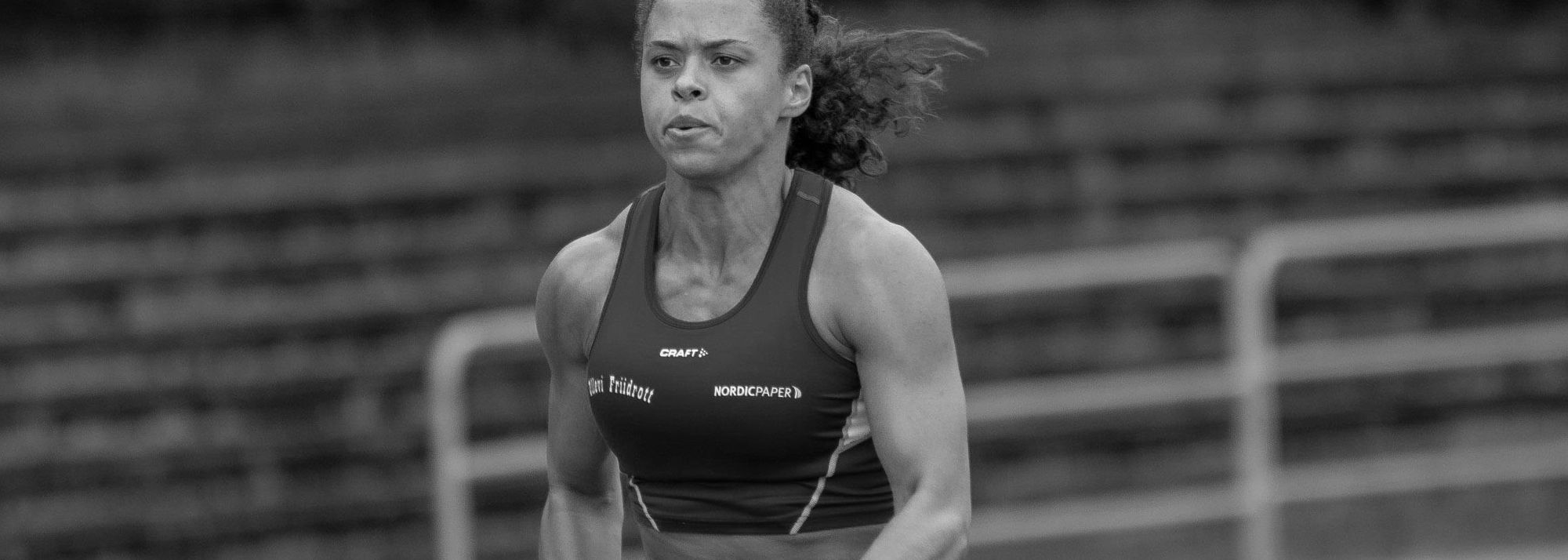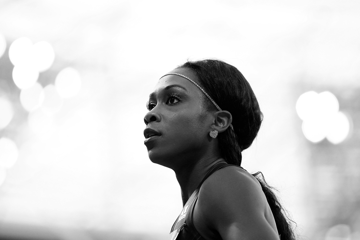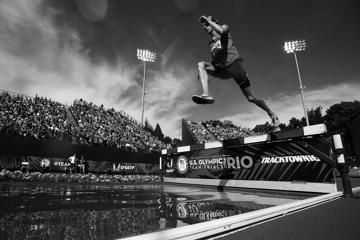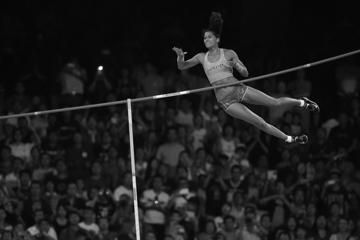Claudia Payton
Being told your sporting career is over is hard at any age, but being told that when you’re 15 – before it’s really even begun – is truly devastating.
I refused to believe it. It happened to me in 2013, about two years after an incident that turned my world upside down.
When I was 13, I was playing a game of soccer, running towards the goalkeeper and ready to shoot. I collided with her and my momentum sent me flying over, but my leg got caught between her legs and stayed where it was. What happened next, I’ve mostly put together through the recollection of others.
I screamed, and then passed out.
When I woke up, my teammates and coaches were around me, telling me not to look back, that everything was fine. Of course curiosity got the better of me, and I looked back. My leg was in the shape of a Z, the knee, the tibia, the fibula, all rotated to the outside.
I hadn’t just broken my femur, I had twisted it right off.
It was a cold day, and it took about 45 minutes for the ambulance to arrive. Thinking I had dislocated my knee, the paramedics tried twice to pop it back into place, but it wasn’t working. That pain was next level.
When we got the hospital, I started getting really worried.
“We need to act now, this is an emergency,” said one doctor.
Because my leg was deformed and the blood couldn’t circulate as normal, I had a really low pulse, and at that point it got scary.
I remember the nurses putting pain medicine into both of my arms, and I screamed again, then passed out again.
It was the first time they had ever seen that injury in the hospital, so there were many meetings between the doctors and surgeons about what to do and, in the end, they had to improvise a bit. I had a whole cast over my leg and two metal parts inserted into my knee, from the femur down to the tibia and fibula.
After two or three weeks I went to start physiotherapy and I soon realised how long recovery would take.
“If you are the luckiest person in the whole world, it’ll take two years, and that’s without any complications,” he said. “But with this fracture, it’ll probably be more.”
I was in a wheelchair for three months. I couldn’t go the toilet by myself, I had to have one in my room and my Mom had to help me use it.
I went to school in that wheelchair, and I’d need someone to push me around or to help me open doors. I couldn’t live my own life, and was always reliant on others.
I tried to stay as positive as I could because there was no point grieving. The fracture was there, the wheelchair was there, I just had to accept my new life and see it from another perspective: now I had time to work on my mentality and build up strength in both of my legs, to get stronger and better than I’d ever been before.
I had been doing athletics for about nine months before the injury and had come to love it, but in those years I saw my rehab exercises as training sessions. After I got out of the wheelchair I was on crutches for at least half a year, and I wasn’t allowed off them until I got full range of motion in my knee.
I’d try my best, hoping to get a few degrees more each week, but progress is not always linear.
In 2013, I went on vacation to Spain and our accommodation was a 10-minute walk to the beach. I couldn’t even manage that – the pain was too much. Every time I bent my knee, it would lock and I couldn’t straighten it.
I had another two surgeries to figure out what was wrong but, eventually, the surgeon told me there was nothing he could do, that I pretty much had to live with it.
We said: “You can’t be serious, you're telling us there is no one in the entire world who can fix this?”
He said the best he can do is send me to another city, so I was referred to a doctor in Gothenburg, three hours from where I lived.
I held on to hope. When I found out the new guy had been Zlatan Ibrahimovic’s doctor, I knew I was in good hands. He did scans when I arrived and found I had cartilage under my patella. He told me they could do surgery to remove it but that it would take six months to do sport again, that I’d have to be prepared to endure that time away.
Of course, I jumped at the chance: “It’s that or never do sports again.”
That surgery was successful, and in the summer of 2014, almost three years on from my accident, I started to learn how to walk, to jog, and finally to run, again.
I thought, once the injury was fixed, it’d be pretty easy. It wasn’t. My coaches would tell me I’m running “behind”, that I had to use my front mechanics.
But somehow, after only six months’ training, I won the Swedish U20 60m title. I couldn’t describe that feeling in words, but I was so grateful and happy and proud of myself that I managed to keep going, to believe and keep my positivity. I always had a very strong will when it came to sports, but that injury forced me to develop a never-give-up attitude.
When I was a kid, I never wanted to lose, I always wanted to win every race, to be the best soccer player on the pitch. But when I got invalidity in my knee, the battle was only against the injury.
Even now, it still goes on. Almost 10 years later, I still don’t have full range of motion back. I can’t sit on my knees or bend my knee so much, but I do what I can.
Coming into 2021, I knew I was in good shape, but then another injury popped up: I pulled my adductor. I’d already missed the 2019 and 2020 indoor seasons, and it seemed then like I was about to miss 2021.
But the thing about my body: once we know what’s wrong it heals very fast. Normally that injury takes six to eight weeks but I managed to get back after a month, and in February I brought my 60m PB from 7.44 down to 7.30, winning the Swedish title.
Going to Torun for the European Indoors, I thought I could run just under 7.30, but what happened that weekend left me in total shock.
I ran 7.28 to finish second in my heat and in my semi-final I finished third in 7.26. As I stood there, watching the names pop up, I had no clue where I finished. Only the top two made it through, but when I saw my name in third, with a small q beside it, I was stunned. People didn’t think I’d even make the semi-final.
I’m going to run the final. This can’t be possible.
I was proud of what I achieved, given where I’d come from. With how bad things were in my teenage years, I consider it a miracle.
If the surgeon in Gothenburg had agreed that there was nothing that could be done, that might have been it, I might never have returned to sport.
I missed three years of training, and it was a slow, slow process to learn how to walk, to jog, to run and – finally – to sprint again. Back then, I always dreamt of being the best in the country but I knew it would be very tough to get there.
It’s been a long journey to get here, but I hope this is just the beginning.
Photography: courtesy of Joakim Karlsson & Claudia Payton








